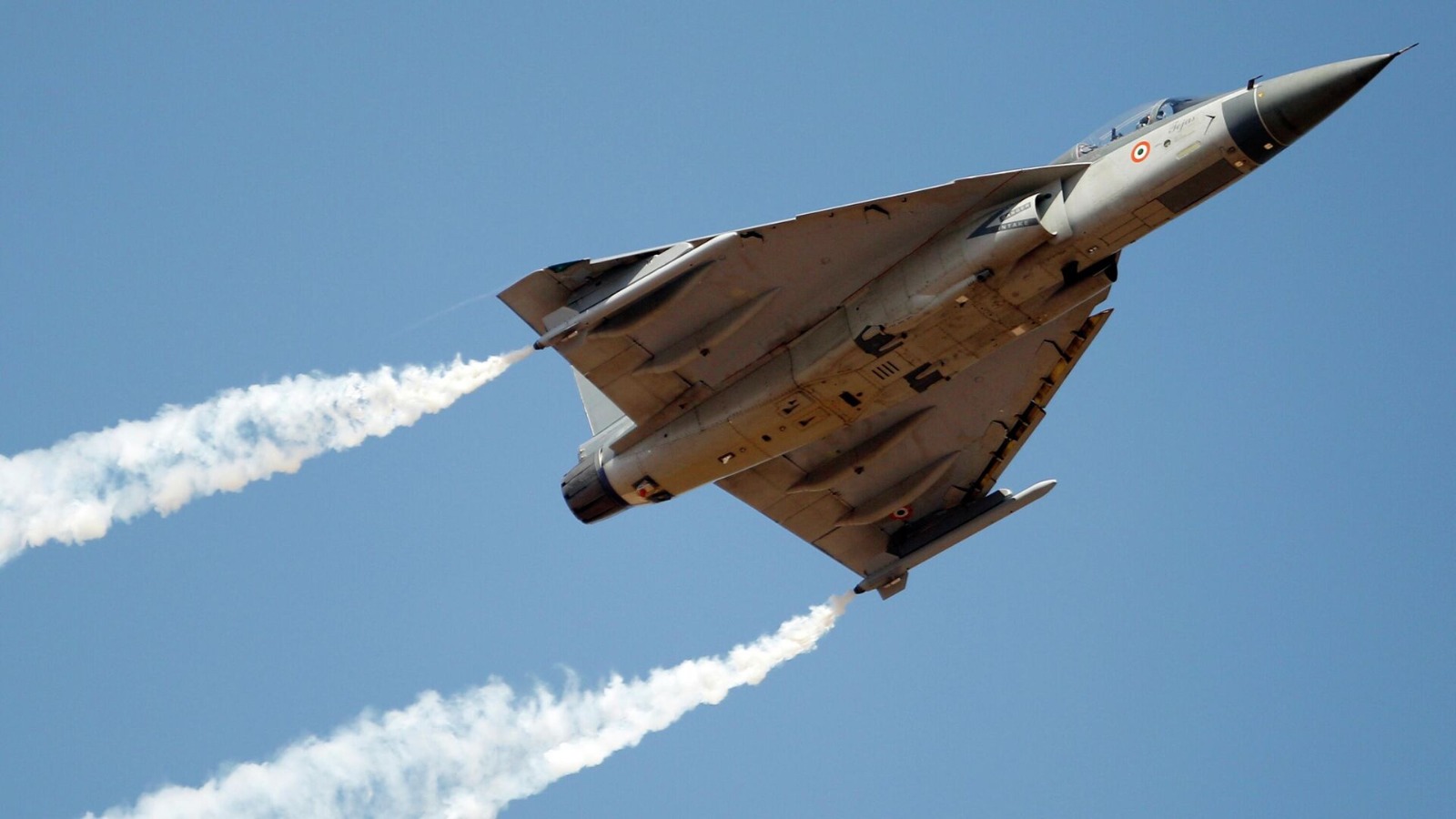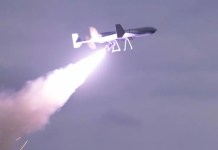The Indian Air Force’s (IAF) workhorse for the last six decades, the MiG-21, will soon become part of history as India will retire the last two squadrons of the fighter jets in September this year.
The last 36 MiG-21 Bisons, belonging to the No. 3 Squadron, Cobras, and the No. 23 Squadron, Panthers, both stationed at the Nal Air Base in Rajasthan, will retire by September.
Once these Soviet-era fighter jets are retired, the two squadrons will receive the indigenously developed, upgraded Tejas Mk-1A fighter jets.
Notably, the IAF is already operating two squadrons of the Tejas Mk1 fighter jets, the No. 45, the Flying Daggers, and the No. 18, the Flying Bullets.
The IAF has ordered 40 Tejas Mk1 fighters. According to the latest reports, the IAF has already received 38 of these 40 Mk1 fighter jets. The remaining two Mk1 aircraft are the two-seat trainer variants.
Subsequently, the IAF placed an order for 83 MK1A fighter jets. The IAF is gearing up to place a follow-on order for 97 more Mk-1A aircraft, estimated at approximately Rs 67,000 crore (US$7.8 billion), which would bring the total fleet size of the Tejas Mk-1A to 180.
This means that not only will the retiring MiG-21 Bisons be replaced by the Tejas Mk-1A fighter jets, but most of the new additions to the IAF in the coming years will be of the Mk-1A variant, unless India signs some new deal for buying another fighter jet.
Tejas Mk-1A To Dominate IAF Strength After Su-30 MKI
The IAF is currently struggling with an unprecedented shortage of fighter jets. Against a sanctioned strength of 42 squadrons, the IAF currently has only 31 operational squadrons.
Furthermore, the two squadrons of MiG-21 Bisons are scheduled to retire in September, which will reduce the total number of active squadrons to 29.
Currently, the IAF has the largest fleet of Su-30 MKIs. The IAF operates nearly 260 Su-30 MKIs. The IAF has also placed an order for 12 more Su-30 MKIs.
However, in the coming years, Tejas will dominate the IAF’s fleet strength.
The IAF is expected to induct 180 Tejas Mk-1As. The IAF has already inducted two squadrons of Tejas Mk-1. The IAF is also expected to place an order for nearly 120 Tejas Mk-2, which is currently under development. The Mk-2 variant of the Tejas is expected to have its first flight next year and is anticipated to enter mass production by 2029.
According to these estimates, the IAF can maintain a fleet of nearly 350 Tejas fighter jets (Mk-1, Mk-1A, and Mk-2 variants) by the early 2030s. When this happens, it will be the first time in eight decades since India’s independence that the IAF will be dominated by an indigenously designed and developed fighter jet.
Clearly, the IAF is heavily relying on the performance of the Tejas fighter jets. The question is whether the IAF is erring in relying so heavily on an indigenously designed fighter jet that has not even been combat-tested.
The Tejas Fighter Jet: Can It Match The Hype?
Ironically, the biggest question marks regarding the success of the IAF’s Tejas plans are not related to its performance or capability, but rather whether it can meet the timelines.
So far, Hindustan Aeronautics Limited (HAL), India’s state-owned aerospace manufacturer, has had a poor record of meeting timelines, an issue consistently flagged by the current IAF Chief, Air Chief Marshal Amar Preet Singh.
Speaking at the Confederation of Indian Industry’s (CII) Annual Business Summit in May 2025, the Air Force chief underscored that “timeline is a big issue,” a sharp reminder of the Indian Air Force’s mounting frustration with HAL over the delayed delivery of Tejas Mk-1A fighter jets.
HAL was supposed to deliver the first batch of the Tejas Mk-1A fighter jets by March 31, 2024. However, the IAF is still awaiting the arrival of the first Mk-1A fighter jet, 16 months after the initial deadline passed.
HAL is now promising to deliver 12 Mk-1A fighter jets by the end of 2025 and deliver the full order of 83 aircraft by 2029, a timeline it is unlikely to meet.
Lastly, HAL’s delivery schedule is critically dependent on General Electric (GE) meeting its timelines for supplying the F-404 engine. GE is running two years behind schedule in providing these engines to HAL, which has already delayed HAL’s MK-1A delivery schedule by nearly two years.
There is no guarantee that HAL will not face these delays in the future.
The 36 MiG-21 Bisons will retire in September. Even according to HAL’s timeline, it will take three years to deliver the replacement for these jets; however, given HAL’s poor track record of meeting timelines, this timeframe may be significantly extended.
Furthermore, the Mk-2 variant is still under development. HAL is promising to start its mass production by 2029; however, here too, there is a big question mark, given that India initiated the Tejas program way back in the 1980s and was able to deliver its first jet only in 2015.
Another issue is the relevance of these 4.5-generation fighters in the 2030s. By the next decade, both the US and China will be operating sixth-generation fighters, featuring stealth ++. Furthermore, the European countries and Japan could also operate sixth-generation (GCAP and FCAS) fighter jets.
Meanwhile, China, India’s primary adversary, has already inducted two fifth-generation fighters, and there are reports that Pakistan could acquire China’s latest stealth fighter, the J-35, despite Islamabad denying the accuracy of such reports.
Incidentally, India is also developing its fifth-generation fighter jet, the Advanced Medium Combat Aircraft (AMCA). As India’s capability gap with Pakistan and China increases, India’s expanded timelines for the induction of these 4.5-generation fighter jets can come under pressure.
Indeed, many experts are already suggesting that India should reconsider developing the Tejas Mk-2 and instead focus on fast-tracking the AMCA program.
In an article, Yusuf T. Unjhawala, an adjunct scholar at the Takshashila Institution, noted that by the time the Tejas MK-2 is expected to be inducted (2028-2030), these jets could already be obsolete.
“To maintain a qualitative edge over its adversaries, put scarce resources to better use and look at over 50 years at the horizon, the Indian Air Force should drop its plan to make 200 fourth-generation LCA Tejas Mark-2 fighter jets and focus on the fifth-generation Advanced Medium Combat Aircraft – AMCA – stealth fighter jets,” Unjhawala noted in his article.
Another concerning factor is Tejas’s small size. While the small size reduces the Tejas’s Radar Cross Section (RCS), it also imposes limitations on the takeoff weight range. It restricts space for accommodating additional electronics, such as data boxes, secure network devices, built-in countermeasures, and associated wiring.
Electronic warfare and advanced sensors for networked aerial combat are fast becoming essential features of aerial combat. However, Tejas’s small size means limited flexibility in integrating these advanced features into these jets.

Furthermore, according to a former IAF fighter pilot who does not want to be named, while the Mk-1A variant has many advanced features compared to the Mk-1 variant, it is still inferior to US-designed fourth-generation fighter jets, such as the F-16, in many crucial aspects, like fuel capacity, speed, takeoff weight, combat radius, mission endurance, and climb rate.
Additionally, the Mk1A, being a relatively new platform, will have to establish support networks to address maintenance requirements. The F-16 benefits from a well-established global support infrastructure due to its extensive operational history.
“Maintenance and logistics play a significant role in ensuring the operational readiness of fighter aircraft. The availability of spare parts, technical support, and ease of maintenance influence the overall sustainment costs and operational efficiency,” he said.
To conclude, it is true that Tejas’s indigenous development gives India operational freedom and enhances New Delhi’s self-reliance in defense.
However, HAL’s poor track record in meeting timelines, its critical dependence on GE for engine supply, Tejas’s untested combat performance, expanded timelines stretching into the 2030s, and limited ability to integrate new features due to its small size are concerning factors.
It remains to be seen if India can address these shortcomings and adapt Tejas for future challenges.
- Sumit Ahlawat has over a decade of experience in news media. He has worked with Press Trust of India, Times Now, Zee News, Economic Times, and Microsoft News. He holds a Master’s Degree in International Media and Modern History from the University of Sheffield, UK.
- VIEWS PERSONAL OF THE AUTHOR.
- He can be reached at ahlawat.sumit85 (at) gmail.com




